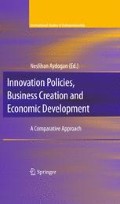Abstract
Fractional calculus is a generalization of classical calculus, which is a generalization of ordinary differentiation and integration to arbitrary order, and has recently been used in various fields like physics, engineering, biology, and finance. By applying fractional calculus to Romer’s Technological Change Model, we introduce this new method to the field of economics and obtain a generalized solution for the model.
Access this chapter
Tax calculation will be finalised at checkout
Purchases are for personal use only
Preview
Unable to display preview. Download preview PDF.
References
Agion, P., Howitt, P. (1992). A model of growth: creative destruction. Econometrica,60(2), {323–351}.
Arrow, K. J. (1962). The economic implications of learning by doing. Review of Economic Studies,29(6), 155–173.
Baleanu, D. (2006). Fractional Hamiltonian analysis of irregular systems. Signal Processing,86(10), 2632–2636.
Baleanu, D., Muslih, S. I. (2005). Formulation of Hamiltonian equations for fractional variational problems. Czech. J. Phys., 55(6), 633–642.
Bellman, R. E. (1957). Dynamic programming. Princeton, NJ: Princeton University Press.
Cass, D. (1965). Optimum growth in an aggregative model of accumulation. Review of Economic Studies,32(8), 233–240.
Chiang, A. (1992). Elements of dynamic optimization. New York: McGraw-Hill
Grossman, G., Helpman, E. (1991). Innovation and growth in the global economy. Cambridge, MA: MIT Press.
Heymans, N., Podlubny, I. (2006). Physical interpretation of initial conditions for fractional differential equations with Rieman-Liouville fractional derivatives. Rheol. Acta, 45, 765, 771.
Kilbas, A. A., Srivastava, H. M., Trujillo, J. J. (2006) Theory and applications of fractional differential equations. Amsterdam: Elsevier.
Lucas, R. E. (1988). On the mechanics of economic development. Journal of Monetary Economics,22(1), 3–42.
Podlubny, I. (1999). Fractional differential equations. San Diego CA: Academic Press.
Pontryagin, L. S. (1962). The mathematical theory of optimal process. New York: Interscience (translated by K.N. Trirogoff).
Rabei, E. M., Nawafleh, K. I., Hijjawi, R. S., Muslih, S. I., Baleanu, D. (2007). The Hamiltonian formalism with fractional derivatives. Journal of Mathematical Analysis and Applications, 327, 891–897.
Ramsey, F. (1928). A mathematical theory of saving. Economic Journal,38(11), 543–559.
Rebello, S. (1991). Long-run policy analysis and long-run growth. Journal of Political Economy,99(3), 500–521.
Romer, P. M. (1986). Increasing returns and long-run growth. Journal of Political Economy,94(5), 1002–1037.
Romer, P. M. (1987). Growth based on increasing returns due to specialization. American Economic Review,77(2), 56–62.
Romer, P. M. (1990). Endogenous technological change. Journal of Political Economy,98(5), {71–102}.
Sargent, T. (1987). Advance macroeconomics.
Solow, R. (1956). A contribution to the theory of economic growth. Quarterly Journal of Economics, 1(2), 65–94.
Swan, T. W. (1956). Economic growth and capital accumulation. Economic Record, 32(11), {334–361}.
Uzawa, H. (1965). Optimal technical change in an aggregative model of economic growth. International Economic Review,6(1), 18–31.
Author information
Authors and Affiliations
Editor information
Editors and Affiliations
Rights and permissions
Copyright information
© 2009 Springer Science+Business Media, LLC
About this chapter
Cite this chapter
Omay, T., Baleanu, D. (2009). Solving Technological Change Model by Using Fractional Calculus. In: Aydogan, N. (eds) Innovation Policies, Business Creation and Economic Development. International Studies In Entrepreneurship, vol 21. Springer, New York, NY. https://doi.org/10.1007/978-0-387-79976-6_1
Download citation
DOI: https://doi.org/10.1007/978-0-387-79976-6_1
Publisher Name: Springer, New York, NY
Print ISBN: 978-0-387-79975-9
Online ISBN: 978-0-387-79976-6
eBook Packages: Business and EconomicsEconomics and Finance (R0)

